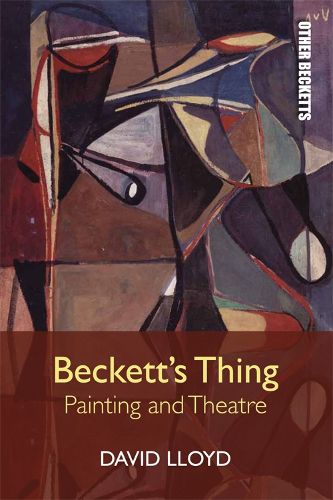Readings Newsletter
Become a Readings Member to make your shopping experience even easier.
Sign in or sign up for free!
You’re not far away from qualifying for FREE standard shipping within Australia
You’ve qualified for FREE standard shipping within Australia
The cart is loading…






Explores Samuel Beckett’s relation to painting and the visual imagination that informs his theatrical work
Beckett was deeply engaged with the visual arts and individual painters, including Jack B. Yeats, Bram van Velde, and Avigdor Arikha. In this monograph, David Lloyd explores what Beckett saw in their paintings. He explains what visual resources Beckett found in these particular painters rather than in the surrealism of Masson or the abstraction of Kandinsky or Mondrian. The analysis of Beckett’s visual imagination is based on his criticism and on close analysis of the paintings he viewed. Lloyd shows how Beckett’s fascination with these painters illuminates the “painterly’ qualities of his theatre and the philosophical, political and aesthetic implications of Beckett’s highly visual dramatic work.
Key Features
Discusses Beckett’s relationship with three painters crucial to his life-long dialogue with the visual arts The first book to examine the paintings that Beckett would have known and on which he based his critical remarks Accounts for the increasing visuality of Beckett’s theatre in relation to his evolving appreciation of painting and the formal questions posed by that medium Explores Beckett’s anticipation of European phenomenology and psychoanalysis in relation to Heidegger and Lacan
$9.00 standard shipping within Australia
FREE standard shipping within Australia for orders over $100.00
Express & International shipping calculated at checkout
Explores Samuel Beckett’s relation to painting and the visual imagination that informs his theatrical work
Beckett was deeply engaged with the visual arts and individual painters, including Jack B. Yeats, Bram van Velde, and Avigdor Arikha. In this monograph, David Lloyd explores what Beckett saw in their paintings. He explains what visual resources Beckett found in these particular painters rather than in the surrealism of Masson or the abstraction of Kandinsky or Mondrian. The analysis of Beckett’s visual imagination is based on his criticism and on close analysis of the paintings he viewed. Lloyd shows how Beckett’s fascination with these painters illuminates the “painterly’ qualities of his theatre and the philosophical, political and aesthetic implications of Beckett’s highly visual dramatic work.
Key Features
Discusses Beckett’s relationship with three painters crucial to his life-long dialogue with the visual arts The first book to examine the paintings that Beckett would have known and on which he based his critical remarks Accounts for the increasing visuality of Beckett’s theatre in relation to his evolving appreciation of painting and the formal questions posed by that medium Explores Beckett’s anticipation of European phenomenology and psychoanalysis in relation to Heidegger and Lacan